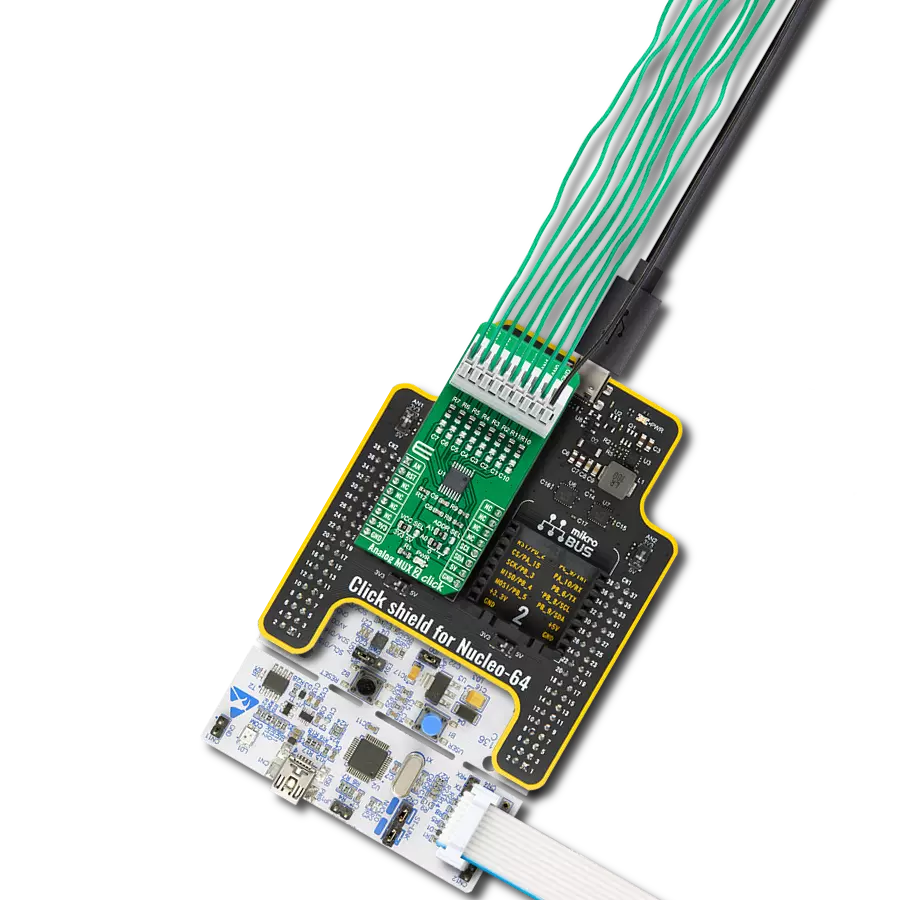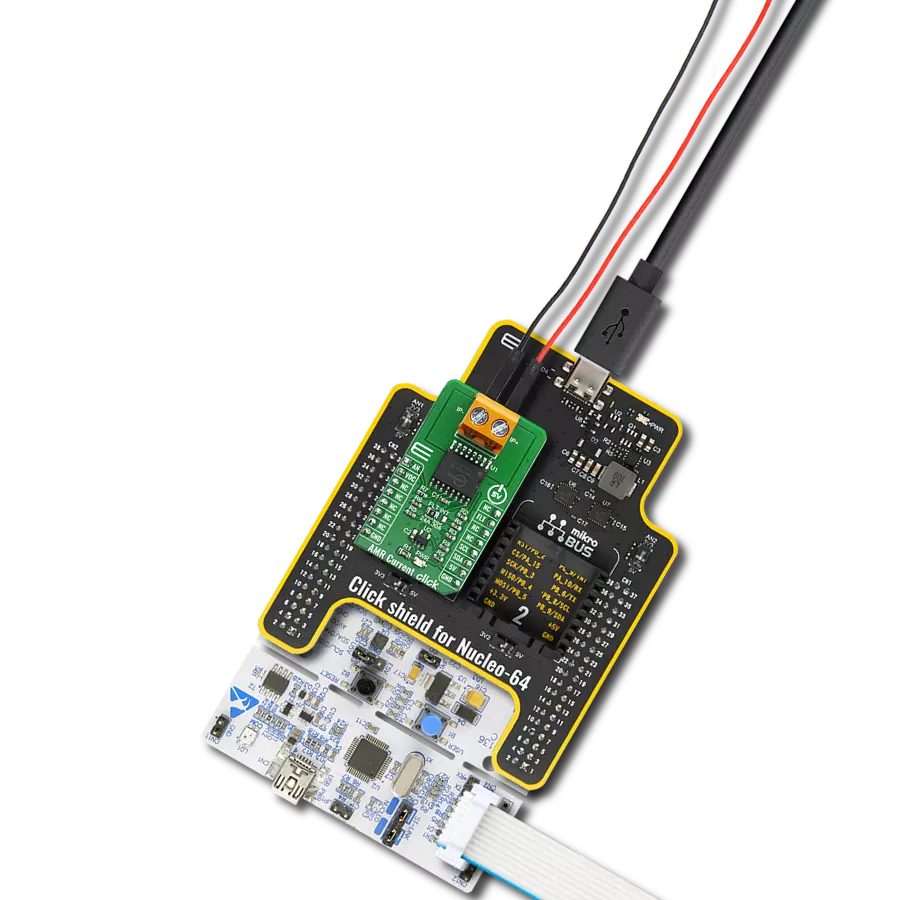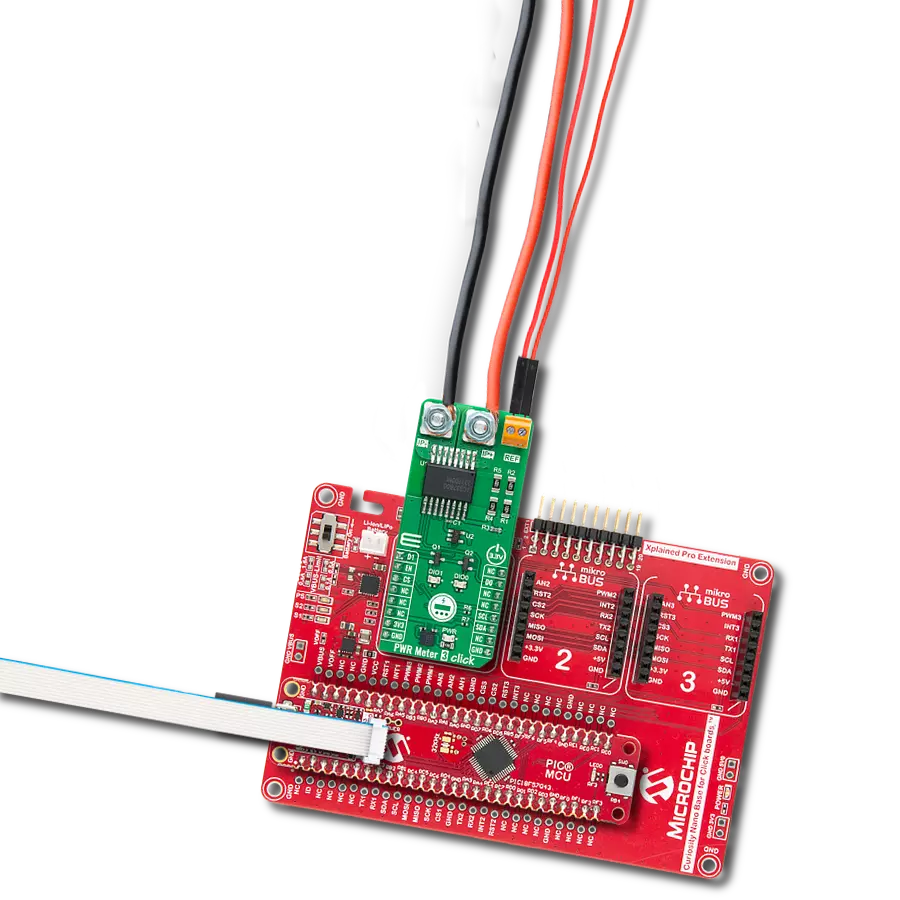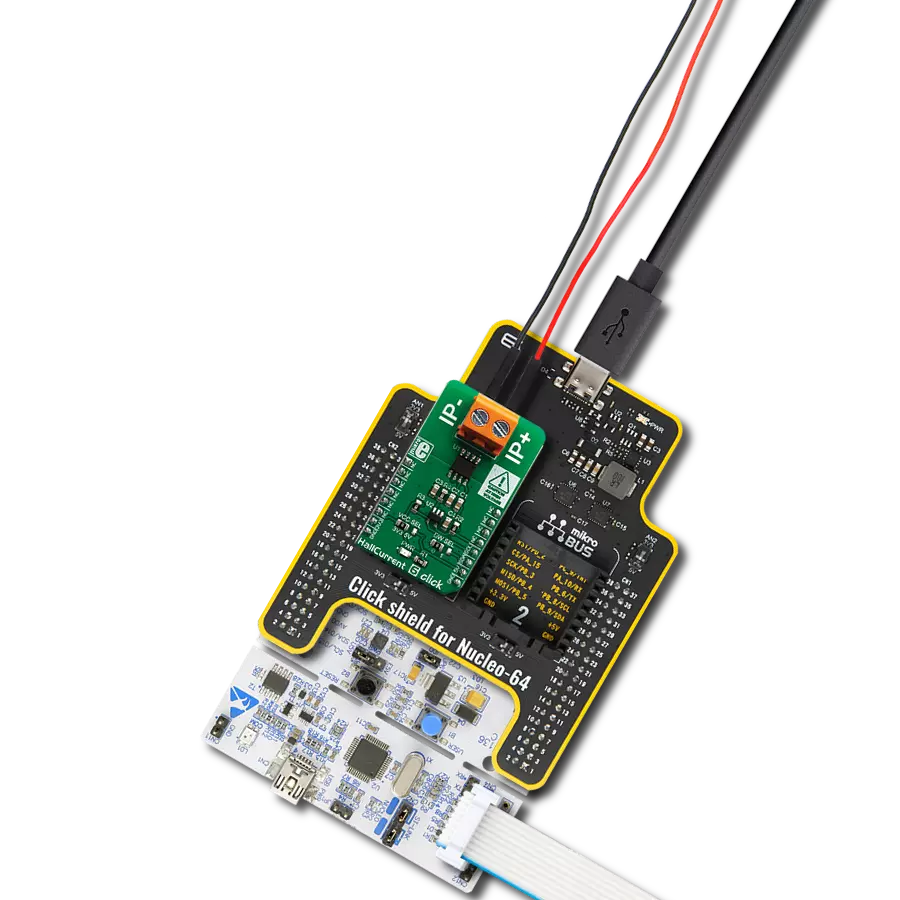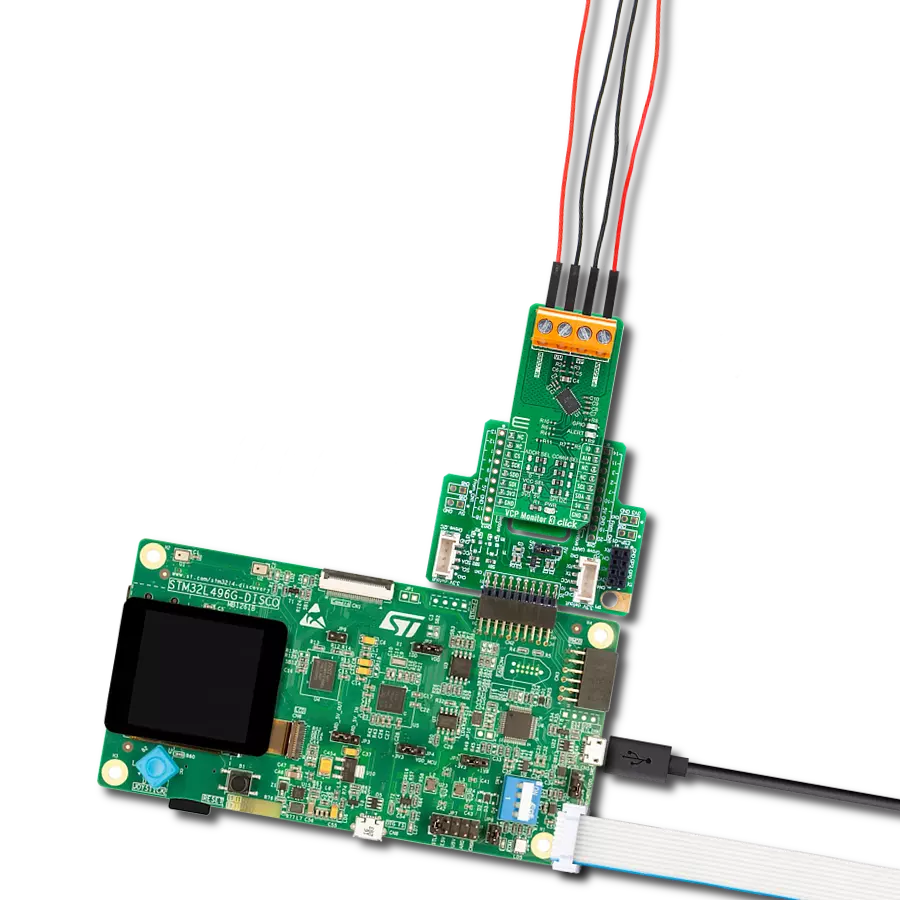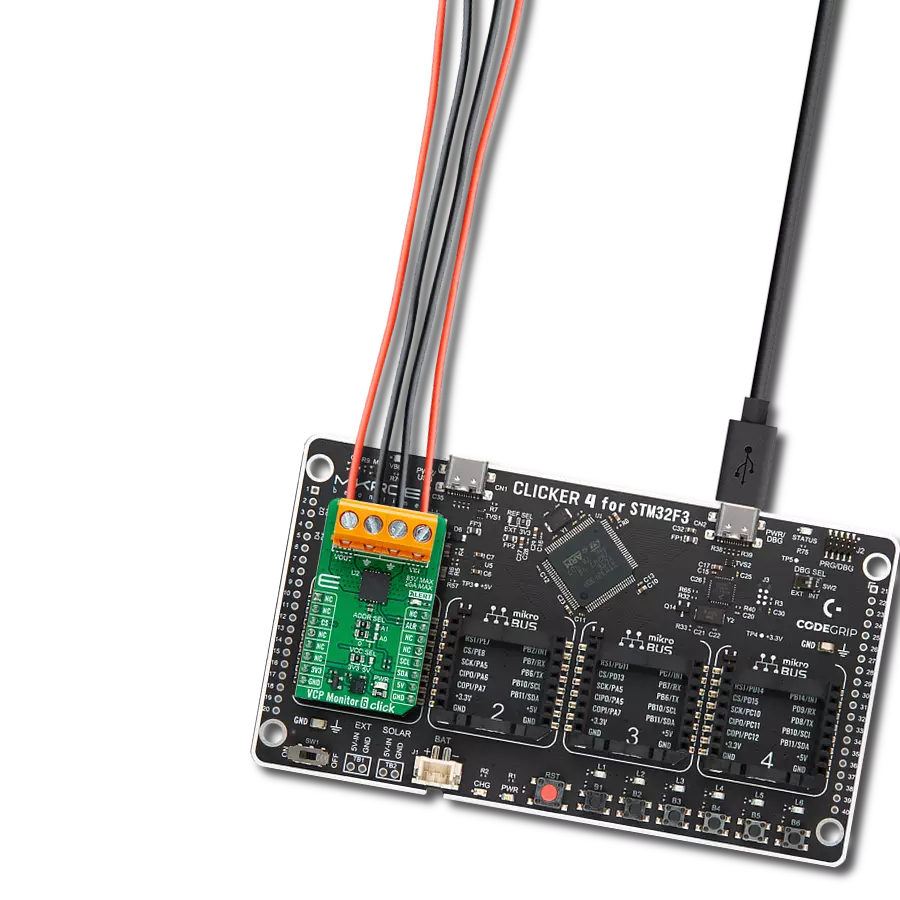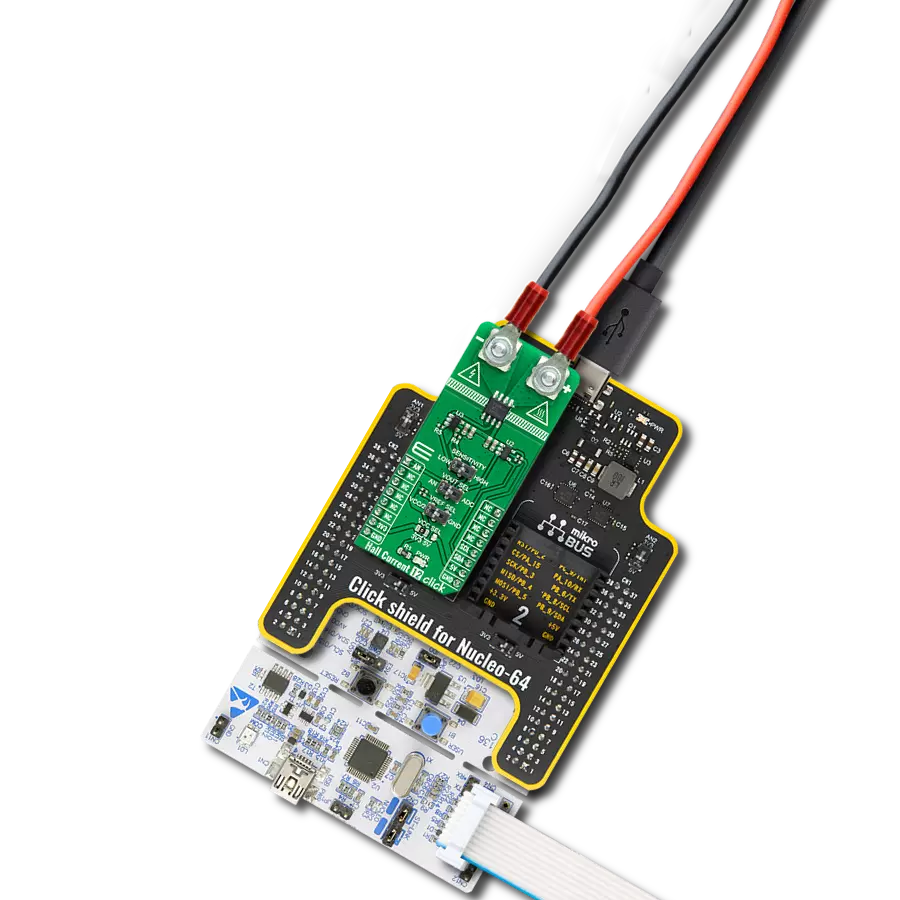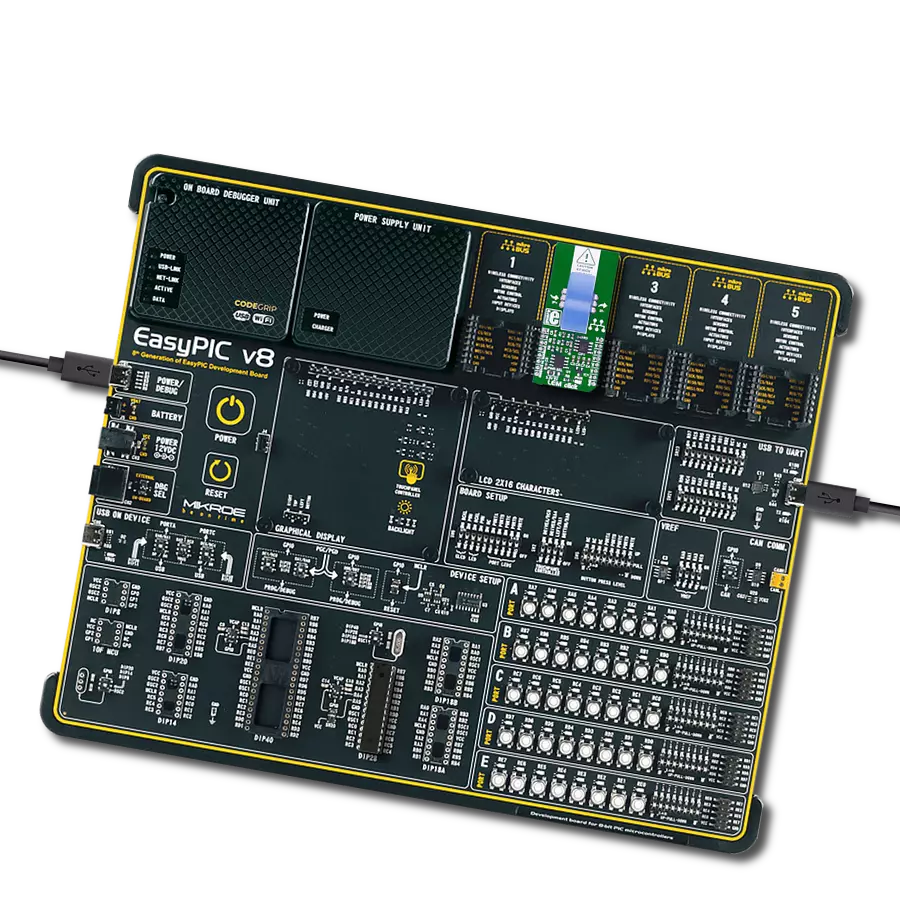We have developed a cutting-edge technology that offers comprehensive monitoring of voltage, current, and power to support reliable and stable electrical systems
A
A
Hardware Overview
How does it work?
VCP Monitor 3 Click is based on the LTC2947, a high-precision power and energy monitor with an internal sense resistor supporting up to ±30A from Analog Devices. Input Range allows 0V to 15V bus voltages with 0.5% measurement accuracy. The LTC2947 is responsible for measuring current, voltage, power, charge and energy with 1% current and charge accuracy and 1.2% power and energy accuracy. Additional features include an alert indication in case some of the thresholds are exceeded, and user-configurable GPIO pin for various functions. The LTC2947 possesses internal 300µΩ, temperature-compensated sense resistor that minimizes efficiency loss and external components, simplifying energy measurement applications while enabling high accuracy current measurement over the full temperature range. All measured quantities are stored in internal registers accessible via the selectable I2C/SPI interface. The LTC2947 features programmable high and low thresholds for all measured quantities to reduce digital traffic with the host. Measuring a total of seven parameters: current, voltage, power, charge (coulombs), energy, and
run time, as well as its own chip temperature, makes this click board excellent for high variety of applications. Main chip LTC2947 includes three no latency delta-sigma analog-to-digital converters to simultaneously measure current, voltage, and power. It also measures die temperature and derives the accumulated quantities charge, energy, and time using an on-board oscillator. It stores these values in internal registers that can be read out via the serial interface, configurable as either I2C or SPI. The LTC2947 keeps track of the minimum and maximum measured values for each of the measured quantities. Thresholds can be set for each parameter, and the LTC2947 will set the corresponding bit in the Alert register and optionally alert the host by pulling low on the ALERT pin when a threshold is exceeded. A GPIO pin is included that can be used for four different purposes. It can be configured as a general-purpose-logic input or output, as an output to automatically control a fan based on the LTC2947’s internal silicon temperature measurement or as an input to enable and disable accumulation of charge, energy, and time. The LTC2947 measures
each input with an ADC specifically tailored for the task. Connections labeled as IM (Negative) and IP (Positive) are high side current sense inputs and must be tied in series with the load intended for the measurement. Voltage sense inputs VM (Negative) and VP (Positive) should be connected parallel to the load for a second ADC to measure the differential voltage between those two terminals. More information about the LTC2947’s functionality, electrical specifications, and typical performance can be found in the attached datasheet. VCP Monitor 3 Click supports both SPI and I2C communication interfaces, allowing it to be used with a wide range of different MCUs. The communication interface can be selected by moving SMD jumpers grouped under the COMM SEL to an appropriate position (SPI or I2C). The slave I2C address can also be configured by SMD jumpers under ADDR SEL when the Click board™ is operated in the I2C mode. This Click Board™ is designed to be operated with both 3.3V and 5V logic levels that can be selected via VCC SEL jumper. This allows for both 3.3V and 5V capable MCUs to use the communication lines properly.
Features overview
Development board
EasyAVR v7 is the seventh generation of AVR development boards specially designed for the needs of rapid development of embedded applications. It supports a wide range of 16-bit AVR microcontrollers from Microchip and has a broad set of unique functions, such as a powerful onboard mikroProg programmer and In-Circuit debugger over USB. The development board is well organized and designed so that the end-user has all the necessary elements in one place, such as switches, buttons, indicators, connectors, and others. With four different connectors for each port, EasyAVR v7 allows you to connect accessory boards, sensors, and custom electronics more
efficiently than ever. Each part of the EasyAVR v7 development board contains the components necessary for the most efficient operation of the same board. An integrated mikroProg, a fast USB 2.0 programmer with mikroICD hardware In-Circuit Debugger, offers many valuable programming/debugging options and seamless integration with the Mikroe software environment. Besides it also includes a clean and regulated power supply block for the development board. It can use a wide range of external power sources, including an external 12V power supply, 7-12V AC or 9-15V DC via DC connector/screw terminals, and a power source via the USB Type-B (USB-B)
connector. Communication options such as USB-UART and RS-232 are also included, alongside the well-established mikroBUS™ standard, three display options (7-segment, graphical, and character-based LCD), and several different DIP sockets which cover a wide range of 16-bit AVR MCUs. EasyAVR v7 is an integral part of the Mikroe ecosystem for rapid development. Natively supported by Mikroe software tools, it covers many aspects of prototyping and development thanks to a considerable number of different Click boards™ (over a thousand boards), the number of which is growing every day.
Microcontroller Overview
MCU Card / MCU
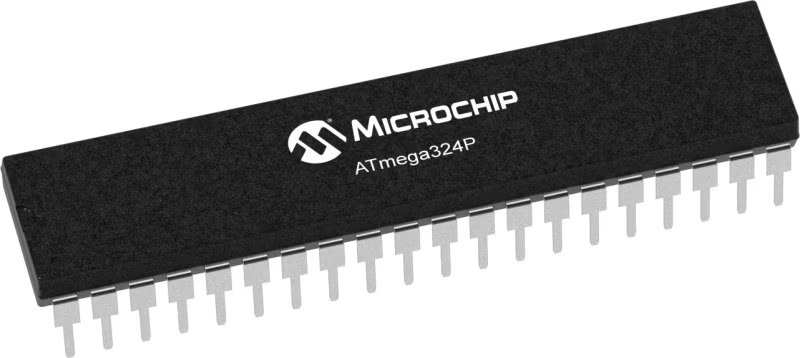
Architecture
AVR
MCU Memory (KB)
32
Silicon Vendor
Microchip
Pin count
40
RAM (Bytes)
2048
Used MCU Pins
mikroBUS™ mapper
Take a closer look
Click board™ Schematic

Step by step
Project assembly
Track your results in real time
Application Output
1. Application Output - In Debug mode, the 'Application Output' window enables real-time data monitoring, offering direct insight into execution results. Ensure proper data display by configuring the environment correctly using the provided tutorial.

2. UART Terminal - Use the UART Terminal to monitor data transmission via a USB to UART converter, allowing direct communication between the Click board™ and your development system. Configure the baud rate and other serial settings according to your project's requirements to ensure proper functionality. For step-by-step setup instructions, refer to the provided tutorial.

3. Plot Output - The Plot feature offers a powerful way to visualize real-time sensor data, enabling trend analysis, debugging, and comparison of multiple data points. To set it up correctly, follow the provided tutorial, which includes a step-by-step example of using the Plot feature to display Click board™ readings. To use the Plot feature in your code, use the function: plot(*insert_graph_name*, variable_name);. This is a general format, and it is up to the user to replace 'insert_graph_name' with the actual graph name and 'variable_name' with the parameter to be displayed.

Software Support
Library Description
This library contains API for VCP Monitor 3 Click driver.
Key functions:
vcpmonitor3_rd_page_0- Read Data From Page 0 functionvcpmonitor3_set_op_mode- Set Operation Mode functionvcpmonitor3_read_p- Read Power in Watts function.
Open Source
Code example
The complete application code and a ready-to-use project are available through the NECTO Studio Package Manager for direct installation in the NECTO Studio. The application code can also be found on the MIKROE GitHub account.
/*!
* @file main.c
* @brief VCPMonitor3 Click example
*
* # Description
* VCP Monitor 3 Click show it's full usage by reading current, voltage, power, die temperature
* and voltage at DVCC using SPI or I2C communication protocol.
*
* The demo application is composed of two sections :
*
* ## Application Init
* Initalizes SPI or I2C driver and sets up the device.
*
* ## Application Task
* This example shows capabilities of VCP Monitor 3 Click board
* by reading current, voltage, power, die temperature and
* voltage at DVCC and displaying the results via USART terminal.
*
* @author Mikroe Team
*
*/
#include "board.h"
#include "log.h"
#include "vcpmonitor3.h"
static vcpmonitor3_t vcpmonitor3;
static log_t logger;
static float cur_data;
static float volt_data;
static float pow_data;
static float die_temp;
static float volt_vcc;
void application_init ( void )
{
log_cfg_t log_cfg; /**< Logger config object. */
vcpmonitor3_cfg_t vcpmonitor3_cfg; /**< Click config object. */
/**
* Logger initialization.
* Default baud rate: 115200
* Default log level: LOG_LEVEL_DEBUG
* @note If USB_UART_RX and USB_UART_TX
* are defined as HAL_PIN_NC, you will
* need to define them manually for log to work.
* See @b LOG_MAP_USB_UART macro definition for detailed explanation.
*/
LOG_MAP_USB_UART( log_cfg );
log_init( &logger, &log_cfg );
log_info( &logger, " Application Init " );
// Click initialization.
vcpmonitor3_cfg_setup( &vcpmonitor3_cfg );
VCPMONITOR3_MAP_MIKROBUS( vcpmonitor3_cfg, MIKROBUS_1 );
err_t init_flag = vcpmonitor3_init( &vcpmonitor3, &vcpmonitor3_cfg );
if ( ( I2C_MASTER_ERROR == init_flag ) || ( SPI_MASTER_ERROR == init_flag ) )
{
log_error( &logger, " Communication init." );
for ( ; ; );
}
if ( VCPMONITOR3_ERROR == vcpmonitor3_default_cfg ( &vcpmonitor3 ) )
{
log_error( &logger, " Default configuration." );
for ( ; ; );
}
log_info( &logger, " Application Task " );
}
void application_task ( void )
{
volt_data = vcpmonitor3_read_v( &vcpmonitor3 );
log_printf( &logger, " Voltage : %.2f V \r\n", volt_data );
cur_data = vcpmonitor3_read_i( &vcpmonitor3 );
log_printf( &logger, " Current : %.2f A \r\n", cur_data );
pow_data = vcpmonitor3_read_p( &vcpmonitor3 );
log_printf( &logger, " Power : %.2f W \r\n", pow_data );
die_temp = vcpmonitor3_read_temp( &vcpmonitor3 );
log_printf( &logger, " Die Temperature : %.2f C \r\n", die_temp );
volt_vcc = vcpmonitor3_read_vcc( &vcpmonitor3 );
log_printf( &logger, " Voltage at DVCC : %.2f V \r\n", volt_vcc );
log_printf( &logger, " ------------------------------- \r\n" );
Delay_ms ( 1000 );
}
int main ( void )
{
/* Do not remove this line or clock might not be set correctly. */
#ifdef PREINIT_SUPPORTED
preinit();
#endif
application_init( );
for ( ; ; )
{
application_task( );
}
return 0;
}
// ------------------------------------------------------------------------ END



















